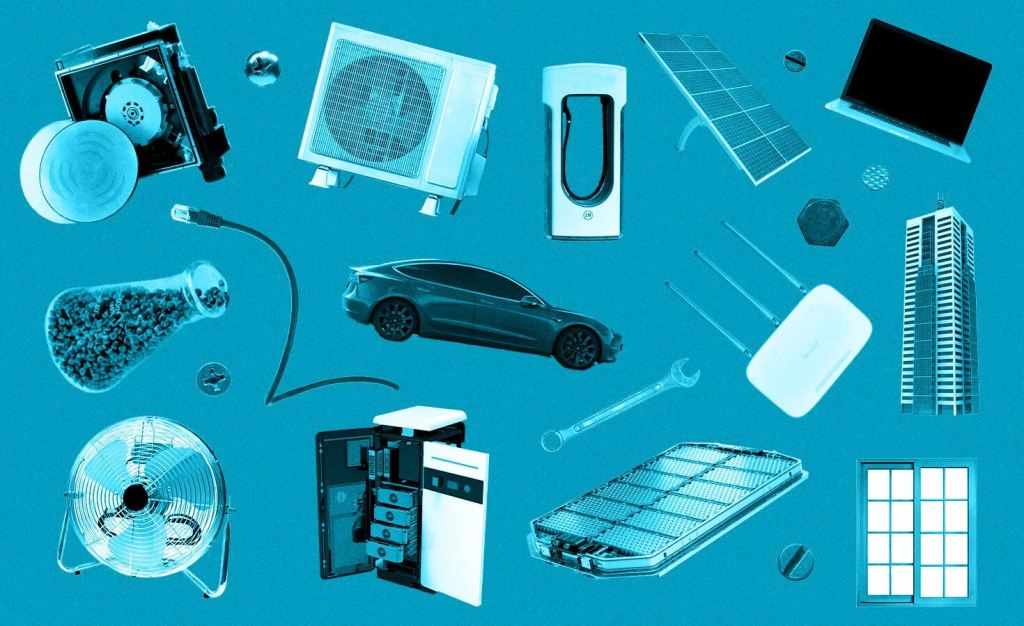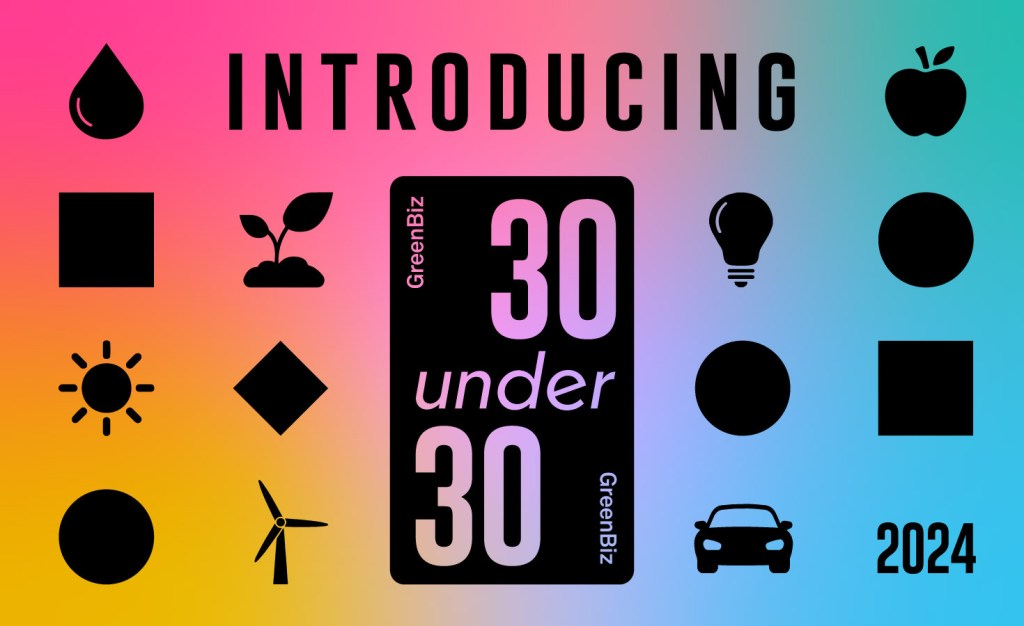7 climate policy topics to track in 2025
From a flailing U.S. grid to the future of nuclear power production, here's a guide to the issues you will need to keep front and center in 2025. Read More

This year, as businesses look to navigate unprecedented changes, including the return of the Donald Trump to the White House and the formation of a new government in Germany, assessing the impact of potential climate policies has never been more critical for executives.
For one, in contrast to the four years of progressive climate policy under the Biden administration, Trump will attempt to cut many clean energy provisions while simultaneously needing to strengthen the integrity and consistency of the U.S. grid.
While there will be a plethora of examples beyond the new administration in Washington marking this global shift, we have identified seven pressing topics that should be front of mind for policy makers and the private sector to track as the year begins.
AI and the future
On Nov. 1, the Federal Energy Regulatory Commission (FERC) denied a service agreement of co-location between grid operator PJM Interconnected and power plant owner Susquehanna Nuclear. The filing would have enabled Amazon Web Services to expand its data center from 300 MW to 480 MW.
And while this filing was rejected, each chairman filed his opinion — either for or against — the ruling, allowing future filings to learn from past precedents. The ruling underscored the enormous double-edge sword for 2025 that is artificial intelligence, with its demand growing exponentially to help drive new businesses, but its deployment requiring outsized amount of energy and water to power it.
Chairman Willie Philips, who argued to allow the filing to succeed, summarized FERC’s relationship with artificial intelligence (AI) and its rapid energy consumption moving forward in his official opinion. “We are on the cusp of a new phase in the energy transition,” he wrote, “one that is characterized as much by soaring energy demand, due in part to AI, as it is by rapid changes in the resource mix … If we instead throw up roadblocks to that transition, as I am concerned today’s order does, we will only deprive our country of the resources needed to ensure our continued economic prosperity and national security.”
By 2028, U.S. data centers will account for up to 12 percent of all domestic electricity consumption, triple what they consumed in 2023. And while FERC blocked PJM’s co-location plan, other large corporations are announcing similar plans.
On Dec. 10, Google announced a strategic co-location partnership with Intersect Power and TPG Rise Climate for the conglomerates’ data centers. Whether FERC will reject this co-location in a similar vein to PJM’s filing remains to be seen, but what it does signal is a shift in focus to data centers.
Takeaway: FERC will become an ever more familiar name to many more in 2025, as the balance between AI’s benefits and its environmental downsides will repeatedly be front and center before regulators.
California clean car standards vs. the Supreme Court
In December, the U.S. Supreme Court confirmed it would hear a business-backed appeal filed by fuel producers to challenge a California 2022 waiver allowing the state to set stricter emissions standards than the nation’s average. The waiver was granted to California by the Environmental Protection Agency.
It’s important to note that the Supreme Court will not be hearing about the constitutionality of the waiver and whether California is allowed to enforce its own emissions standards. This was demonstrated only two days after the Court announced its decision to hear the waiver challenge when it denied a petition from Ohio and several other states, including Texas and South Carolina, to consider whether oil and gas interests had the standing to challenge the lawfulness of the EPA’s decision to grant California the waiver.
Takeaway: Expect the fossil fuel industry to continue to use a legal stick to challenge state-mandated climate regulations.
The state of the US grid
The strength and reliability of the U.S. grid will be a hot topic for the foreseeable future, placing the FERC front and center. FERC is in charge of regulating the interstate transmission of electricity, natural gas, and oil, along with reviewing proposals for blue liquified natural gas (LNG) terminals, interstate natural gas pipelines, and the licensing of hydropower projects.
“FERC is the most significant energy regulatory body in the country, [with] responsibility for oversight of the country’s competitive wholesale electric markets,” said Neil Chatterjee, a former acting FERC chairman appointed by President-elect Donald Trump in 2017 and 2019, “but most critically, it has responsibility for oversight of the reliability of the grid to make sure that when Americans hit the switch, the lights come on.” The U.S.’s grid infrastructure is struggling to handle the increasing electricity load demanded by growing use of AI and data centers, making itself and the country vulnerable to energy insecurity and attack from foreign nations such as China.
In an effort to address this, the Biden administration passed the Inflation Reduction Act in 2021, spurring $493 billion in total business and consumer investment in renewable energy generation and storage development, according to the 2025 Renewable Energy Industry Outlook from Deloitte.
Takeaway: Despite the incoming Trump administration’s vocal dislike of renewable energy technology, AI energy demand on the grid will continue to spur accelerated approval of renewable energy projects and permitting applications.
Permitting reform
All U.S. projects requiring a federally approved permit before they can break ground, with many clean energy projects receiving billions in funding from the Inflation Reduction Act. But the process to receive a permit has long been convoluted and time consuming, leading to wait times of up to four years for a single permit.
Sen. Joe Manchin (I-KY) hoped to cement permitting reform as his legacy before he retired from the Senate after introducing the seemingly popular Energy Permitting Reform Act (EPRA) with co-sponsor Sen. John Barrasso (R -Wyo.). The bill was slated to pass during the lame duck session but ultimately failed, pushing the issue of permitting reform into 2025. The question now is how that will play out in a Republican-controlled Congress and White House in 2025.
“I think it looks like judicial review reform,” said Nikki Chiappa, associate director of climate and energy federal policy at the Breakthrough Institute, emphasizing that both Senate and House chairmen of the Environmental Public Works (EPW) Committee Sen. Shelley Capito (R-WV) and Rep. Bruce Westerman (R-AR) have indicated taking the path of judicial review reform forward in order to tackle the federal permitting logjams.
Following the Supreme Court’s June decision to reverse the Chevron doctrine and defer to the courts to implement federal laws, it makes sense that EPW would shift focus to judicial review reform in the light of the failure of direct permitting reform.
Takeaway: While permitting reform will likely never diminish as a priority, the Republican-led Congress and White House will focus on other areas to achieve similar results as a complete federal overhaul on permitting.
Nuclear power development
Last year redefined nuclear power’s place in the U.S. economy moving forward. The U.S. signed the “Declaration to Triple Nuclear Energy” in December 2023, setting the tone for the coming year. In March, the Vogtle 4 nuclear reactor came online in Georgia, followed by the September announcement that the Department of Energy closed a $1.52 billion loan to restart a previously shuttered Michigan nuclear power station.
Large tech companies also contributed to the rise of nuclear popularity. In September, Microsoft signed a power purchase agreement with Constellation Energy to reopen the nuclear plant on Three Mile Island in Pennsylvania, while in October, Google signed a deal with small nuclear reactor developer Kairos Power to make 500 megawatts of energy available.
As recently as December, the Biden administration called for the creation of 200 GW of nuclear energy capacity to be on the grid by 2050.
On the legislative side, President Joe Biden signed the bipartisan Advance Act into law in June, requiring the Nuclear Regulatory Commission (NRC) to accelerate projects requiring nuclear power licensing and deployment.
Takeaway: As grid reliability continues to waver, nuclear presents itself as an affordable, emissions-free alternative energy to natural gas.
German government collapse
After a vote of no confidence in Germany’s government, Prime Minister Olaf Scholtz’s government – including climate minister Robert Habeck – is likely to be voted out of power in the new elections Feb. 23.
“There was a vote of no confidence for the chancellor, which now means that if the chancellor were to introduce a new law that Parliament has to vote on, the chancellor will not have the votes to get it through,” said climate economist Gernot Wagner. While Wagner doesn’t believe this vote indicates the implosion of the government, he did raise the point that any negative news regarding Germany’s private sector can be twisted as an indictment on the previously ruling green party.
“And that is really bad from a climate perspective,” said Wagner, “It’s particularly bad because in many ways, you know, that allows some, not all mind you, but some, now to frame this as. ‘Oh yeah, the greens were in the coalition government and…tried to do all these things and all of that backfired.”
Takeaway: As the economic powerhouse in Europe and the EU, Germany’s political and economic stability influence is indelible. If it begins to demonstrate a backslide in climate commitments due to a shifting government, it could send a troubling signal to the rest of the EU.
Shifting global tariffs vs. the clean energy sector
Since the campaign trail, Trump has been promising to increase tariffs for important trading partners China, Canada and Mexico. Like Biden, Trump is prioritizing the domestic production of goods over their less expensive imported counterparts.
But, increased tariffs could lead to a much slower supply chain of materials not currently set up within the U.S. and thus an increase of prices for both producers and consumers. Many components of the clean energy supply chain are still currently imported, with the development of domestic supply chains either still ongoing or nonexistent.
Takeaway: If countries like China or the EU decide to respond to Trump tariffs with their own taxes, many domestic manufacturers will be priced out all together.













